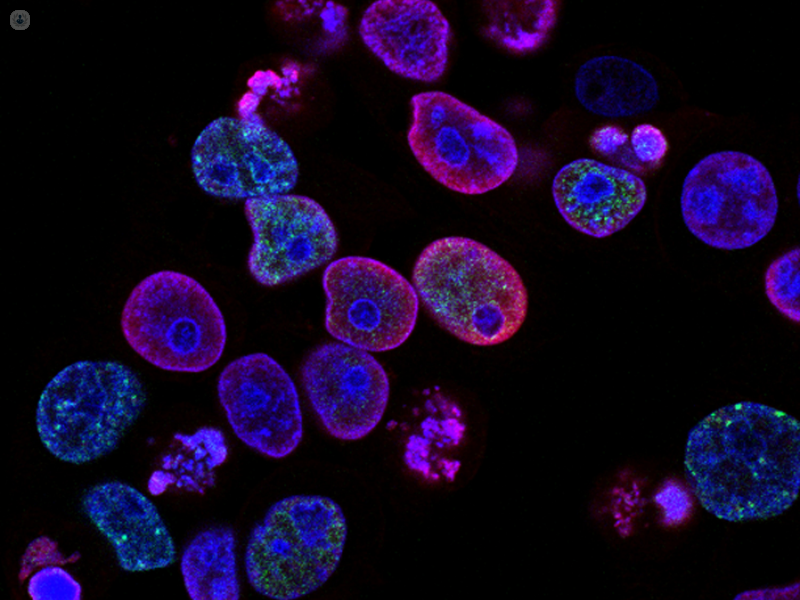Waldenstrom’s macroglobulinaemia
What is Waldenstrom’s macroglobulinaemia?
Waldenstrom’s macroglobulinaemia is a rare type of cancer, in which the bone marrow creates an excess of abnormal lymphoplasmacytic cells (a type of white blood cell). These cells crowd out healthy blood cells and secrete high amounts of the antibody immunoglobulin M (lgM), which can thicken the blood.
Waldenstrom’s macroglobulinaemia develops slowly and mainly affects older men. It is a type of non-Hodgkin lymphoma.

What are the symptoms of Waldenstrom’s macroglobulinaemia?
Waldenstrom’s macroglobulinaemia sometimes does not show symptoms for many years.
If there are symptoms, they may include:
- fatigue
- loss of appetite
- weight loss
- profuse sweating, including night sweats
- bruising or bleeding easily
- pallor and shortness of breath due to anaemia
In addition, the presence of high amounts of IgM can cause hyperviscosity, where the blood becomes thicker, and doesn’t flow as freely. This can cause:
- headache
- vertigo
- difficulty thinking
- drowsiness
- changes in vision or hearing
- tingling or numbness in the extremities
Causes of Waldenstrom’s macroglobulinaemia
Currently, the cause of Waldenstrom’s macroglobulinaemia is unknown. The disease is very rare and when it occurs it mostly affects people over the age of 65. People with a family history of lymphoma have a slightly higher chance of developing it, but it is still highly uncommon.
What is the treatment for Waldenstrom’s macroglobulinaemia?
Due to the slow development of the disease, some people may not need treatment immediately, with their doctors adopting the “watch and wait” approach. This means regular check-ups to monitor the progress of the disease, but no treatment until the condition starts showing symptoms that affect the patient’s life.
The goal of treatment is to alleviate troublesome symptoms and keep the patient alive and well, with a good quality of life, for as long as possible, with the fewest possible side-effects.
Treatment options include:
- Chemotherapy – powerful drugs that destroy cancer cells, but may also damage healthy cells, leading to side-effects.
- Targeted drug therapy – these drugs kill cancer cells by targeting their specific abnormalities.
- Biological therapy – drugs that help the body’s immune system to fight cancer cells.
- Stem cell transplant – an intensive treatment not suitable for everyone involving a transplant of stem cells from a donor’s bone marrow (usually a close relative’s). In some people, combining this with chemotherapy can send their cancer into remission.
- Plasma exchange – a blood-thinning process that involves extracting plasma (containing the IgM antibodies) from the blood, and replacing it with a plasma substitute.
- Clinical trials – your doctor may invite you to participate in a trial of a new treatment for Waldenstrom’s macroglobulinaemia.
Unfortunately, there is no guarantee that the cancer will disappear completely or that it will not eventually return.